Learn to make roasted cumin powder at home. It's also known as jeera powder or ground cumin. You can do this in just 15 minutes using whole cumin seeds. This essential Indian spice adds a warm, earthy flavor to your dishes. Whether you prefer raw or roasted cumin powder, homemade is always fresher, more aromatic, and easy to prepare. A naturally vegan and gluten-free spice blend that belongs in every kitchen!
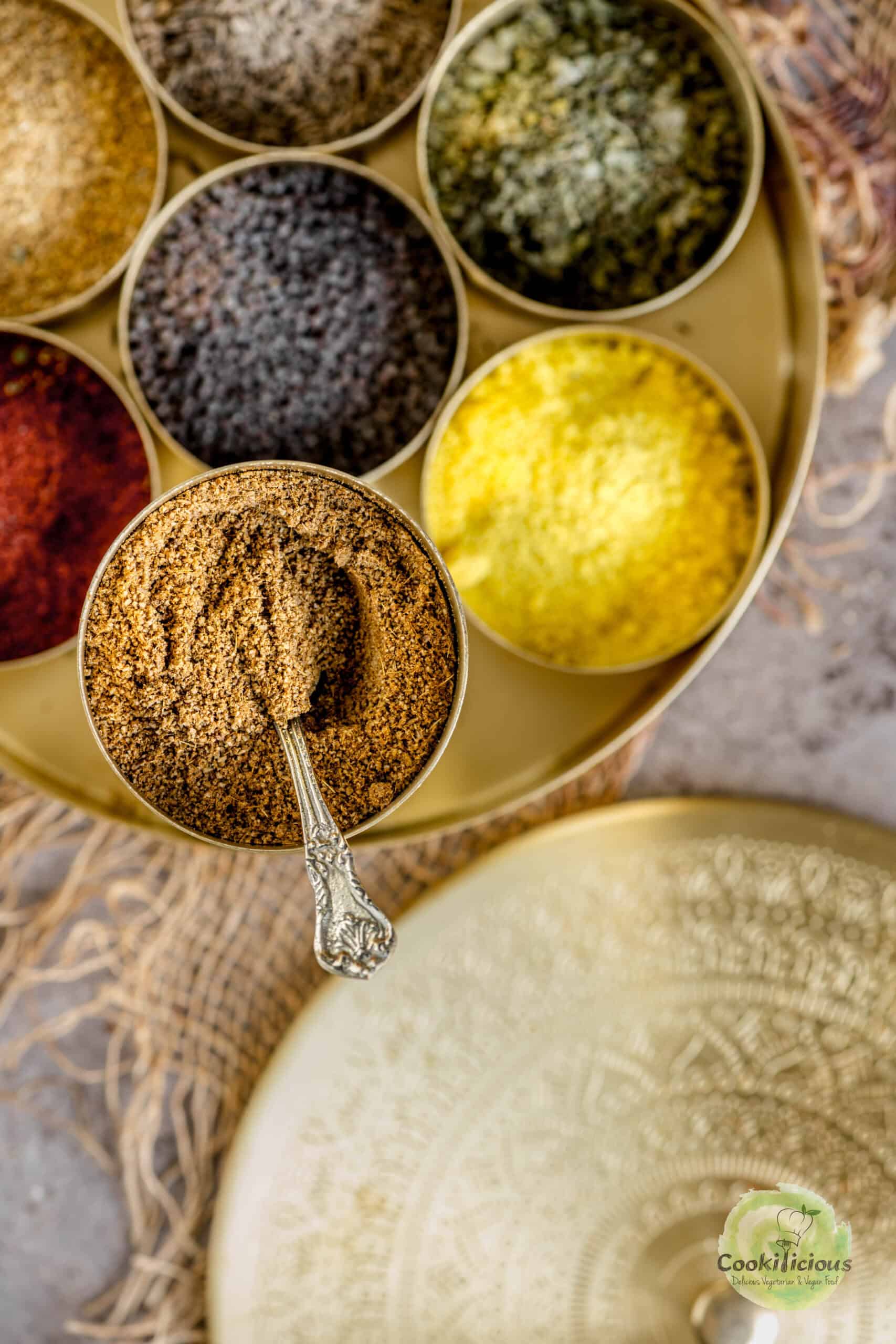
What is Roasted Cumin Powder
Roasted cumin powder is made by dry-roasting whole cumin seeds. It is also known as ground cumin, or jeera. Some also call it zeera (cumin in Hindi) powder. It is referred to as bhuna (means roasted in Hindi) jeera powder. Once roasted, these seeds are then ground into a fine powder. This technique enhances the spice's natural oils and brings out a deeper, smokier flavor compared to raw cumin powder.
Bhuna jeera is an essential spice in Indian cooking, valued for its warm, earthy, nutty taste with slightly bitter undertone. It's commonly used to elevate the flavor of chaats, raitas, dals, curries, and marinades.
Making toasted cumin powder at home ensures it's fresh and preservative-free. It is intensely aromatic. This homemade zeera powder is far superior in quality and flavor than most store-bought versions. Beyond taste, roasted ground cumin is celebrated in Ayurveda for its digestive and medicinal benefits. This makes it a functional pantry staple. It is also flavorful. Homemade jeera powder is often combined with coriander powder to create the signature flavor base of countless Indian recipes.
Cumin is a spice made from the dried seed of a plant known as Cuminum Cyminum, a member of the parsley family. Its seeds are small, brownish, and boat-shaped, closely resembling caraway seeds in appearance. These aromatic jeera seeds are a foundational spice in many of the world's most beloved cuisines. They are used in Indian, Pakistani, Mediterranean, Latin American, Middle Eastern, and Mexican cuisines. They add a warm, earthy depth and a distinctive, slightly pungent flavor to a variety of savory dishes.
Types of Cumin Seeds
The most commonly used variety is brown cumin, which has a brownish-yellow hue. These are the standard jeera seeds found in nearly every Indian pantry and are used in everyday cooking.
The second type is black cumin, known as kala jeera or shahi jeera in Hindi. These seeds are smaller, darker, and have a more delicate, slightly sweeter aroma. While they resemble caraway seeds in appearance, shahi jeera has a distinct flavor. It is typically used in Mughlai cuisine. It is also used in rich, festive dishes like biryanis and kormas.
Cumin Seeds vs Cumin Powder
In Indian cooking, both whole cumin seeds and ground cumin play important but distinct roles. There cannot be used interchangeably because they bring out different flavors in the dish.
Whole jeera seeds are added at the start of cooking. This happens during the tempering process, often along with mustard seeds. This step infuses hot oil with their warm, nutty aroma. This step forms a flavorful base for many dals, sabzis, and curries. I make Jeera Rice and Jeera Milagu Rasam using the seeds.
In contrast, freshly roasted cumin powder doesn't require heat to release its aroma. You can add it at any point during cooking. It is also used as a finishing spice to sprinkle over dishes like chaats, raitas, and salads.
What Does Jeera Taste Like
Jeera has a bold and layered flavor profile. The initial taste is sharp, zesty, and slightly bitter, similar to fresh parsley or citrusy carrot skin. As it lingers, deeper earthy, nutty, and pungent base notes emerge, adding a warm richness to any dish.
This unique flavor complexity is what makes jeera and bhuna jeera essential in many global cuisines. These include Indian, Middle Eastern, and Mexican cooking. It is used to build depth and balance in both savory and spiced dishes.
Why Make It
- 💰Cost-Effective: Buy whole cumin seeds in bulk. Make a large batch of bhuna jeera at home. This costs a fraction of the store-bought spice blend.
- 🌿 All-Natural and Clean: No preservatives, additives, or artificial colors-just 100% pure jeera seeds. This homemade cumin powder recipe is naturally vegan, gluten-free, and nut-free, making it safe for all diets.
- 🌸 Fresh, Fragrant and Flavorful: Store-bought powdered cumin can lose its potency over time. Freshly ground jeera has a rich aroma and robust flavor that instantly elevates your cooking.
- ⏱️ Quick and Easy: Ready in just 15 minutes! Simply roast and grind the cumin seeds. No special equipment needed to make this Indian spice mix.
- 🔥 Customize It: Make raw or powdered cumin based on your recipe needs. Roasted zeera powder adds a deeper, smokier flavor to dishes like chaats, raitas, chili, and curries.
- 💚 Once You Try Homemade, You'll Never Go Back: The flavor, aroma, and freshness of DIY ground jeera are unbeatable. They far surpass any packaged version.
Ingredients needed 🧾
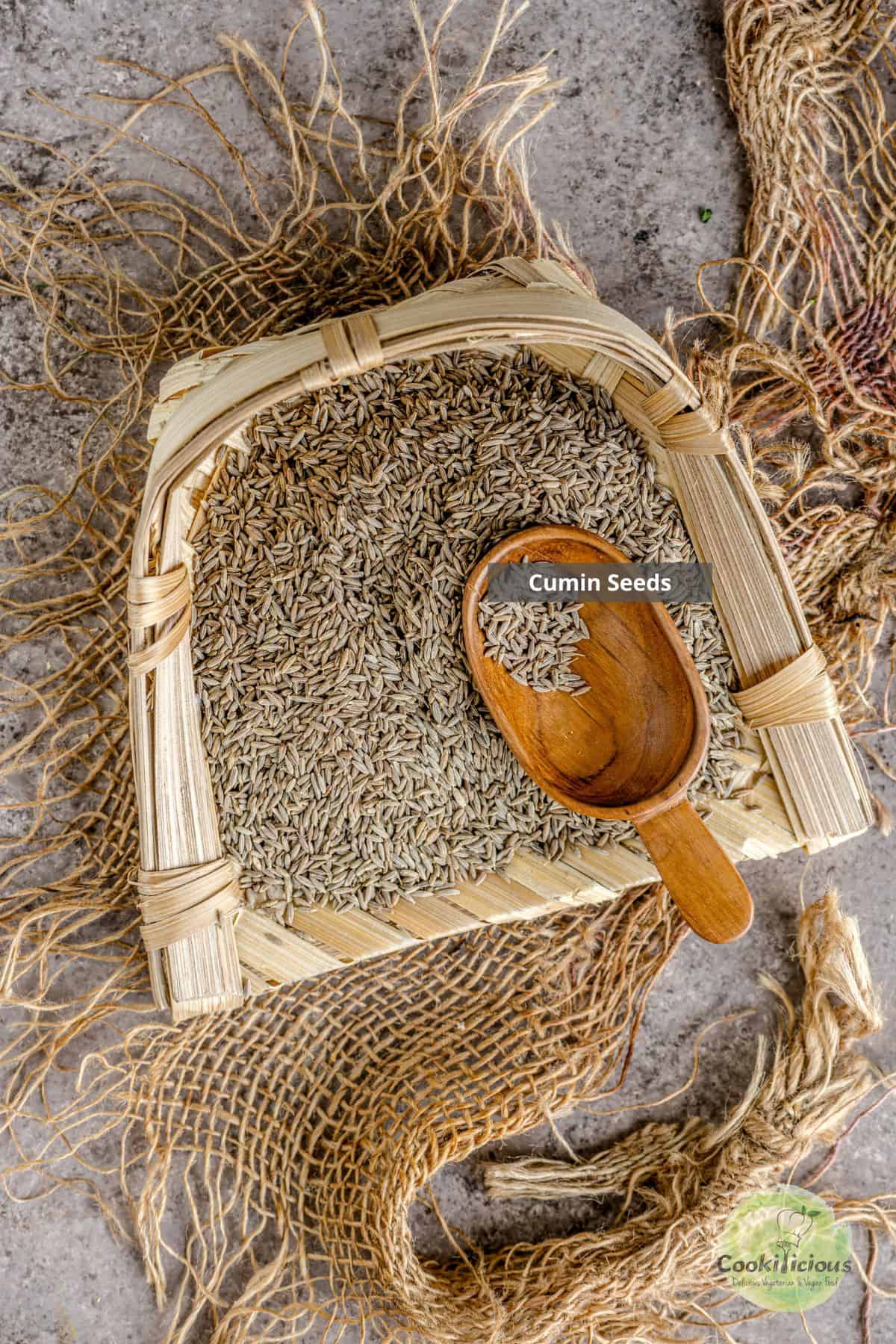
Organic cumin seeds - The only ingredient you need to make ground jeera at home! Opt for whole, organic brown cumin seeds for the best aroma and flavor. You can find them easily at local Indian grocery stores or spice markets. You can also purchase them in bulk from online retailers like Amazon. Buying whole seeds and grinding them fresh ensures your jeera powder is far more flavorful than store-bought versions.
To grind the seeds smoothly, a high-speed mixer grinder or spice grinder works best. It gives you a fine, consistent spice blend every time.
How to make it 🔪
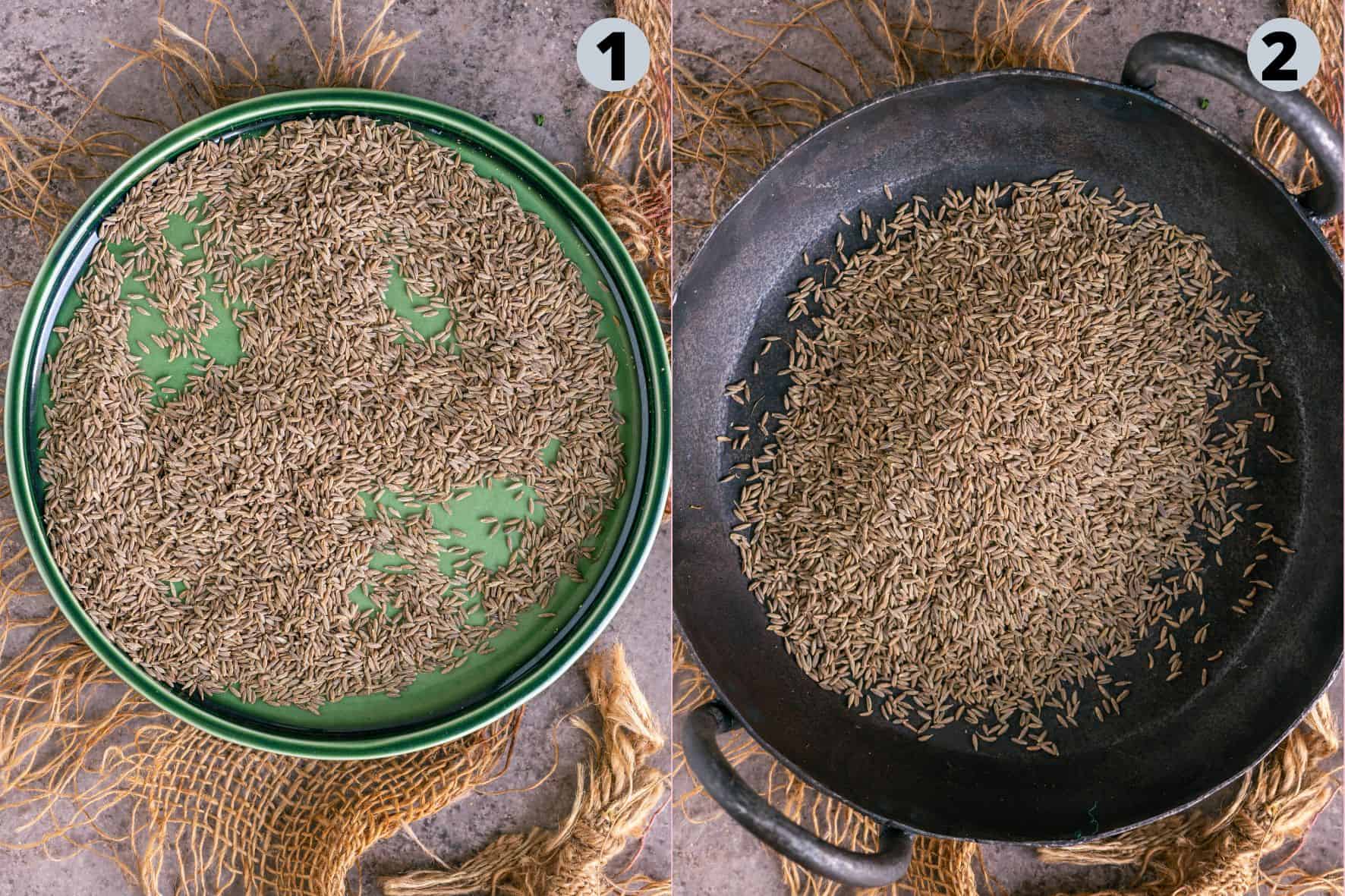
- Add dry cumin seeds to a plate and inspect them carefully. Remove any tiny stones, husks, or impurities.
- Transfer the cleaned seeds to a dry pan. Roast on low to medium heat for 2-4 minutes, stirring continuously to ensure even roasting.
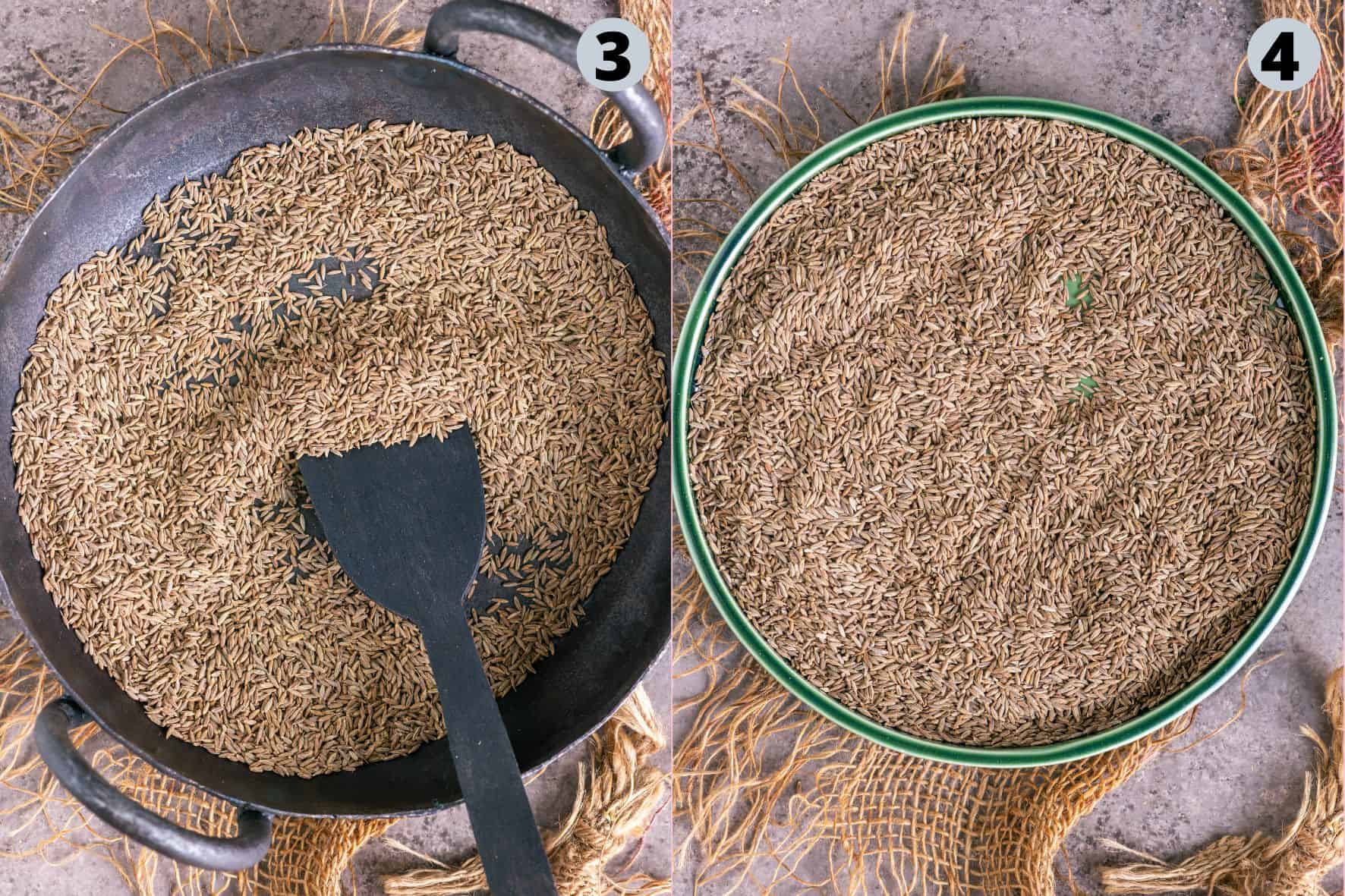
- Roast the seeds until they release a faint, nutty aroma and turn slightly darker in color. Be careful not to over-roast or burn them. They will start popping once they turn the brown color. That's your cue to take the pan off the flame.
- Spread the roasted cumin seeds on a plate and allow them to cool completely at room temperature.
Want to save this recipe?
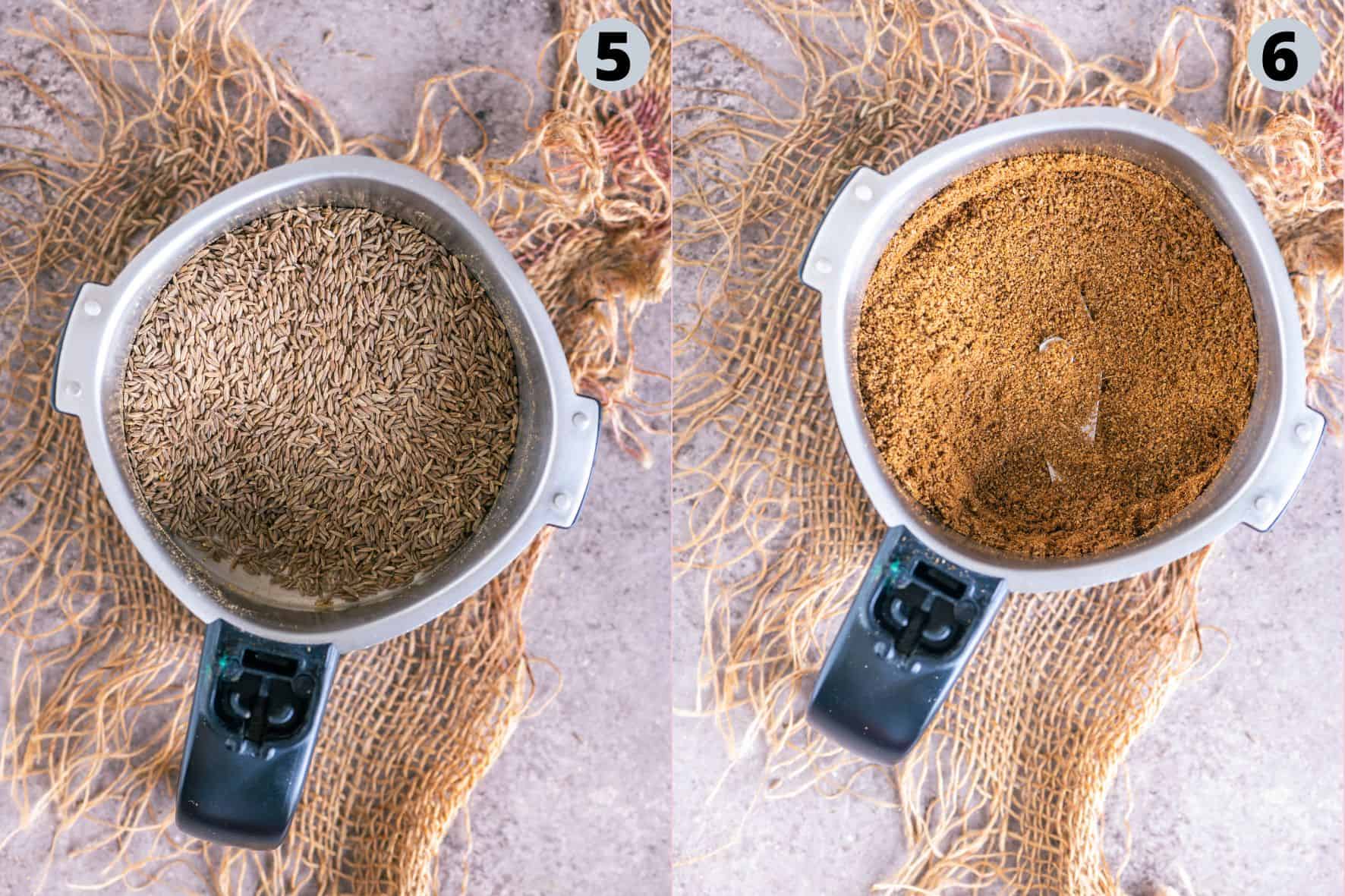
- Once cooled, transfer the seeds to a dry high-power blender or spice grinder.
- Blitz until you get a fine or semi-fine powder-depending on your preference. I keep it little coarse. For an even grind, remember to stop mid way and redistribute the seeds. Take a whiff. It smells amazing. Store the roasted ground cumin in a clean, airtight glass jar. Keep it in a cool, dark place. You can also add it to your masala dabba for easy access during daily cooking.
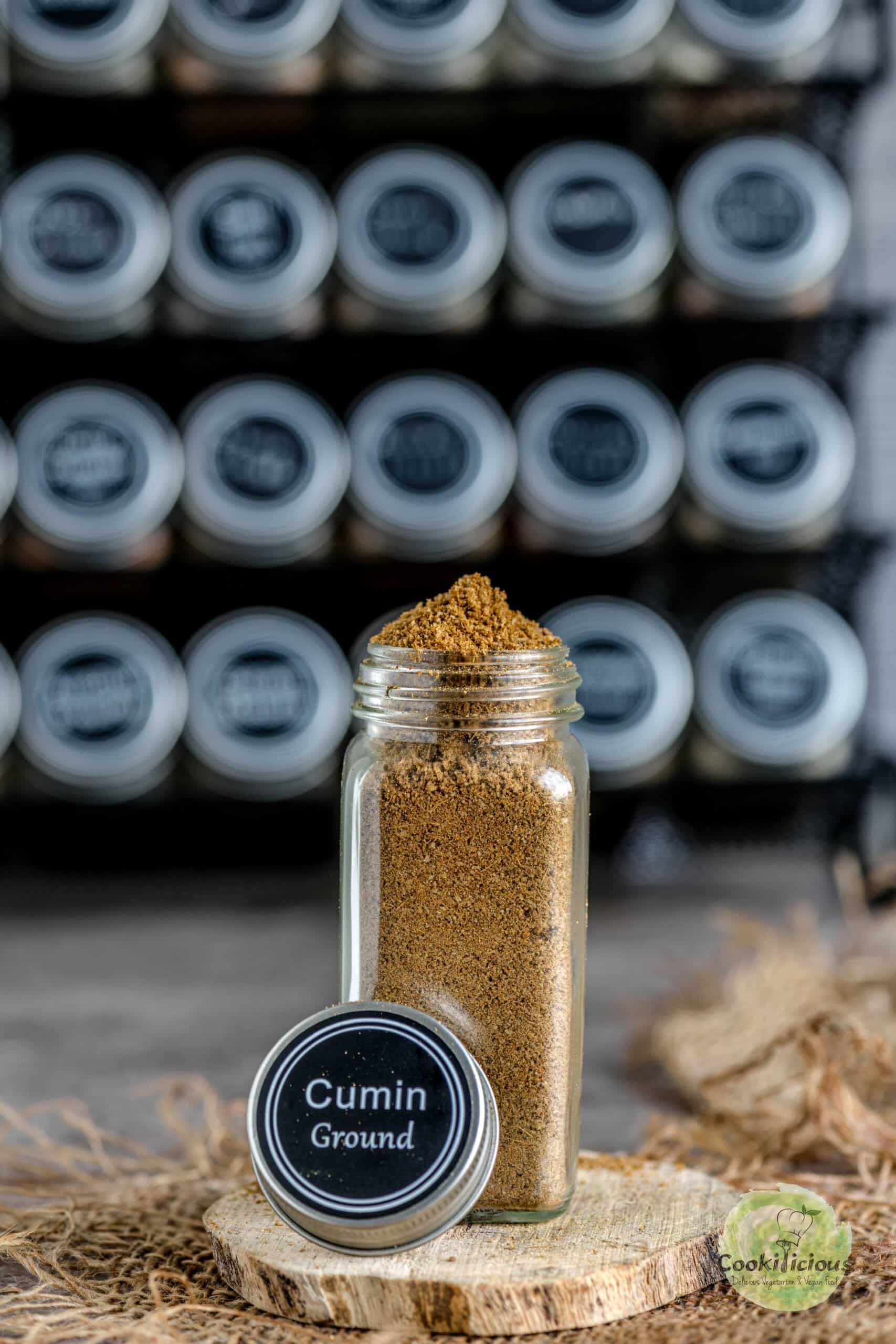
Serving suggestions 🍽
💡 Yield: ½ cup of cumin seeds will yield approximately ½ cup of roasted cumin powder.
Use this homemade jeera powder in any recipe that calls for cumin powder. This includes curries and dals, as well as raitas and chaats. It provides an instant flavor boost. Store your homemade fresh cumin powder in a clean, airtight glass jar to preserve its freshness and aroma. You can also keep it handy in your masala dabba (spice box) for easy access during cooking.
Some other spice blends that I make at home are: Coriander Powder, Ground Turmeric, Garam Masala, Sambhar Podi, and Idli Molagapudi.
🍽️ How to Use Roasted Cumin Powder
Cumin powder is an incredibly versatile spice that enhances both Indian and global dishes with its warm, earthy flavor.
Here are some of my favorite ways to use it:
- In Yogurt-Based Dishes:
Add a pinch of roasted cumin powder to recipes like Boondi Raita, Beetroot Raita, and Dahi Vada to elevate the taste with a smoky zing. - In Drinks and Popsicles:
Jeera powder adds depth to cooling summer drinks like Cold Cucumber Soup, Jaljeera, and Aam Panna, as well as creative twists like Masala Soda Posicles or even Masala Chaas Popsicles. - In Snacks, Chaats and Appetizers:
Sprinkle over Bhel, Dal Pakwan Tostadas, Mushroom Kalan, Ragda Patties, Dabeli Pizza, French Loaf Vada Pav, or Kurkuri Bhindi to instantly boost flavor. - In Curries, Sabzis & Lentils:
Stir into dishes like Chana Masala, Green Moong Dal Fry, Khoya Matar, Aloo Matar, Matar Paneer, or Bhindi Masala for that signature earthy note. - In Rice and One-Pot Meals:
Add to Green Peas Pulao, or Tawa Pulao to give your rice dishes a richer, fuller flavor. - In Global Recipes:
Use ground cumin to add warmth to hummus, salad dressings, dips, pasta sauce, marinades, and spreads-it pairs beautifully with lemon, garlic, and olive oil.
Once you start using this Indian spice blend regularly, you'll see how it brings balance and depth to almost any savory dish!
Top recipe tips 💭
Allow the roasted cumin seeds to cool down completely. Blending warm spices can create unwanted moisture. It can affect both the texture and shelf life of your ground cumin. Ensure your mixer, spice grinder, or blender is thoroughly clean. It should also be dry before use. This helps to avoid any contamination or clumping. You can optionally sieve the jeera powder after grinding for a finer texture. This will remove any coarse bits. It helps achieve a uniform consistency. If you prefer a more rustic texture, use a dry mortar and pestle. You can also use a rolling pin to crush the roasted jeera seeds. Add Ground turmeric or bay leaf when making bhuna jeera for extra flavor.
FAQs 📖
You can easily find whole brown cumin seeds at local Indian grocery stores, spice shops, or organic markets. They're also widely available online through trusted retailers like Amazon, where you can buy in bulk for better value. Choosing organic cumin seeds ensures purity and better flavor.
While the stovetop method is the most common and efficient way to roast cumin seeds evenly, there are other convenient options you can try. For the microwave method, spread the seeds evenly on a microwave-safe plate and heat in 30-second intervals for about 3 minutes, stirring between each interval until the seeds become aromatic.
If you prefer roasting in the oven, preheat it to 325°F (160°C), spread the seeds in a single layer on a dry baking tray, and roast for a few minutes until they darken slightly and release a strong, nutty aroma.
Additionally, in warmer climates, you can sun-dry jeera seeds for several days-a traditional method used by our grandmothers to naturally roast and preserve the seeds.
When roasting jeera seeds, be careful not to burn them, as over-roasting will turn the seeds dark brown and can make your spice blend bitter. Always roast on a low to medium flame, stirring continuously to ensure even roasting and to release the seeds' warm, nutty aroma without burning. Once roasted, immediately transfer the seeds to a plate-do not leave them in the hot pan, even if the heat is off, because residual heat can continue cooking and potentially burn the seeds. Proper roasting is key to making flavorful, aromatic roasted jeera powder for your dishes.
To keep your homemade cumin powder (jeera powder) fresh, flavorful, and aromatic for as long as possible, store it in a clean, dry, airtight container and store it in your spice rack. Using a small kitchen funnel can make transferring the freshly ground spice into your storage jar easy and mess-free. You can store bhuna jeera on its own or mix it with coriander powder to create a versatile dhania-jeera powder blend, depending on your cooking needs.
While whole zeera seeds can last up to 3 years when stored in the freezer, ground cumin has a shorter shelf life-typically about 4 to 6 months. Avoid refrigerating or freezing small amounts of ground spices, as frequent opening introduces moisture and humidity, which can degrade freshness. Best is to make a small batch and store.
If you plan to store roasted cumin powder long-term, consider double-bagging it in airtight bags before freezing to preserve flavor and prevent insect contamination. However, the best storage method is to keep your jeera powder in a cool, dark place-away from direct sunlight, heat, and humidity. Use glass jars or tightly sealed spice containers to lock in aroma and flavor.
Always use a dry spoon when scooping out the spice blend to prevent moisture from causing clumping, loss of aroma, or spoilage.
If you're out of roasted jeera powder, a good substitute is coriander powder (dhania powder). While their flavor profiles differ-jeera offers a warm, earthy, and pungent aroma, whereas coriander is milder and citrusy-they often complement each other in Indian cooking and can be swapped in a pinch.
Keep in mind this won't be an exact replacement, but coriander powder will still add depth and complexity to your dish. You can also substitute it with garam masala, Taco seasoning, curry powder, or paprika for added layers of flavor. The seeds can be swapped with fennel seeds, caraway seeds, or panch phoran.
However, for the authentic aroma and robust flavor that roasted cumin powder brings-especially in Indian curries, chaats, and masalas-there really is no true substitute for fresh homemade bhuna jeera.
It's easy to tell when your homemade roasted cumin powder (jeera powder) has lost its freshness or gone bad. Look out for these signs: if the powder appears clumpy or overly dusty, or if you notice tiny insects or larvae in the jar, it's time to discard it.
Another clear indicator is the aroma-freshly ground jeera should have a strong, warm, earthy fragrance. If the spice has little to no scent or smells stale, it has lost its potency and won't add the rich flavor your recipes need. For the best taste and safety, toss old ground cumin and make a fresh batch regularly.
More Kitchen Essentials
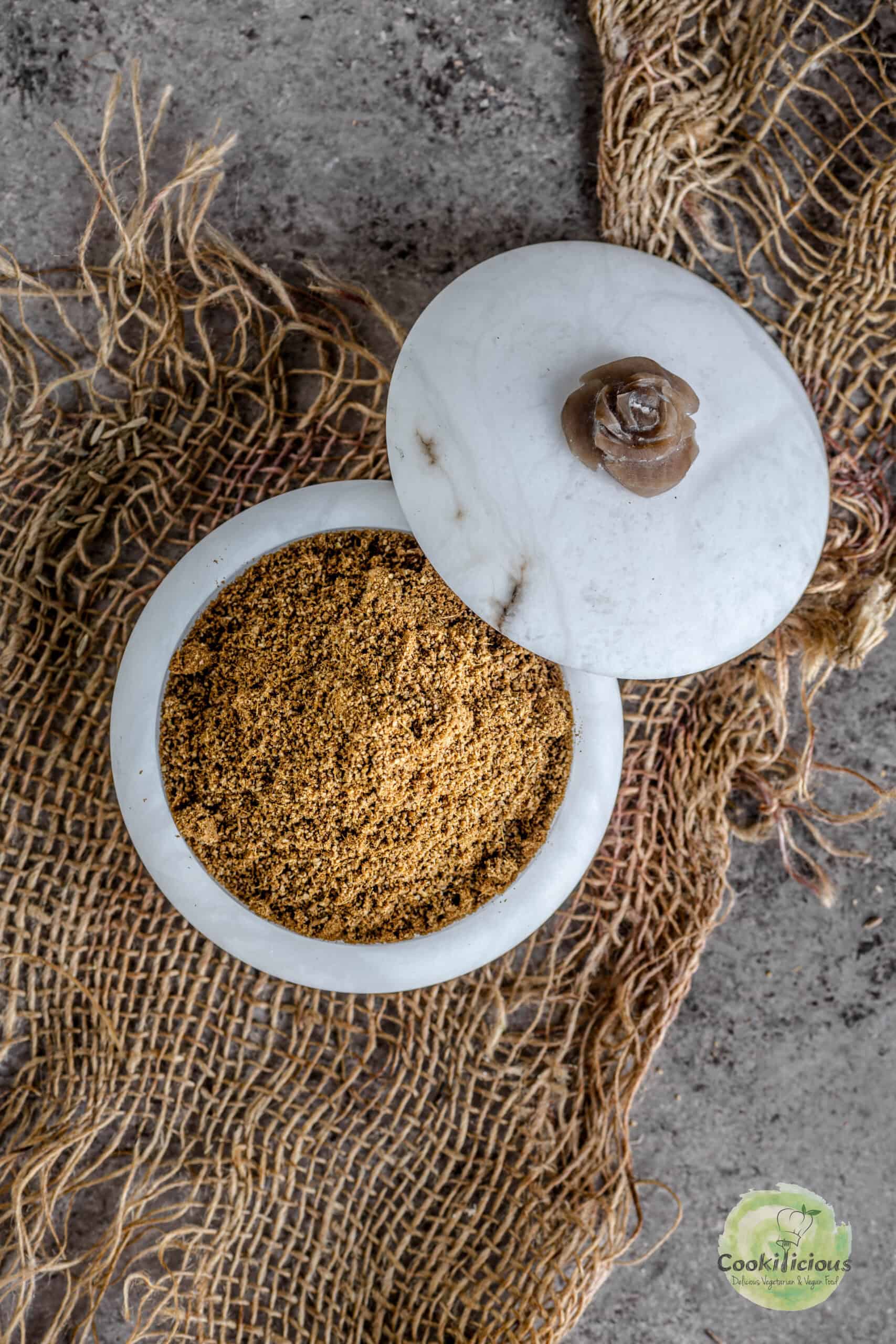
⭐️ Subscribe to the Cookilicious Newsletter and receive new recipes straight to your inbox! You'll receive my FREE Vegan Beginner's guide as a gift. Ready to elevate your cooking game? Purchase my Cookbook - The Essential Vegan Indian Cookbook today!
Recipe 📖

How to Make Roasted Cumin Powder (Jeera Powder)
Equipment
Ingredients
- ½ cup cumin seeds
Instructions
- Add dry cumin seeds to a plate and inspect them carefully. Remove any tiny stones, husks, or impurities.
- Transfer the cleaned seeds to a dry pan. Roast on low to medium heat for 2-4 minutes, stirring continuously to ensure even roasting.
- Roast the seeds until they release a faint, nutty aroma and turn slightly darker in color. Be careful not to over-roast or burn them. They will start popping once they turn the brown color. That's your cue to take the pan off the flame.
- Spread the roasted jeera seeds on a plate and allow them to cool completely at room temperature.
- Once cooled, transfer them to a dry high-power blender or spice grinder.
- Blitz until you get a fine or semi-fine powder-depending on your preference. I keep it little coarse. For an even grind, remember to stop mid way and redistribute the seeds. Take a whiff. It smells amazing. Store the roasted ground jeera in a clean, airtight glass jar. Keep it in a cool, dark place. You can also add it to your masala dabba for easy access during daily cooking. Use this homemade jeera powder in any recipe that calls for cumin powder.

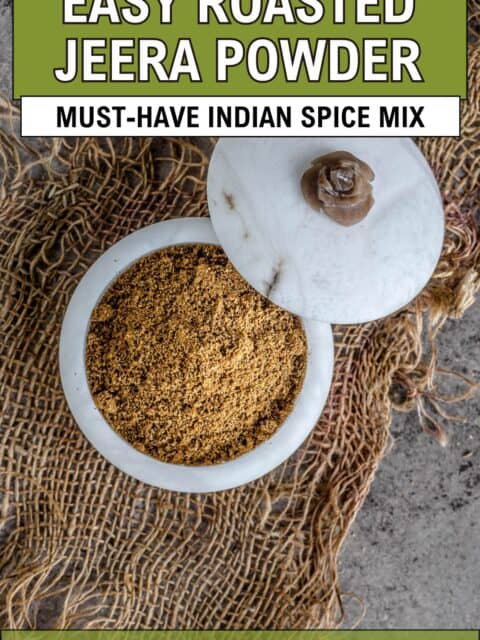

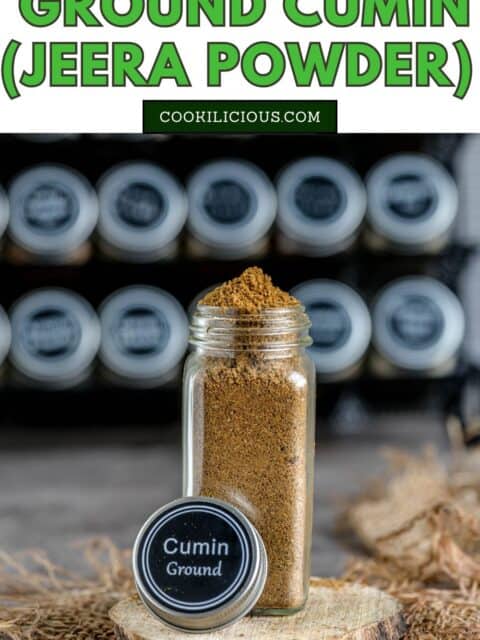
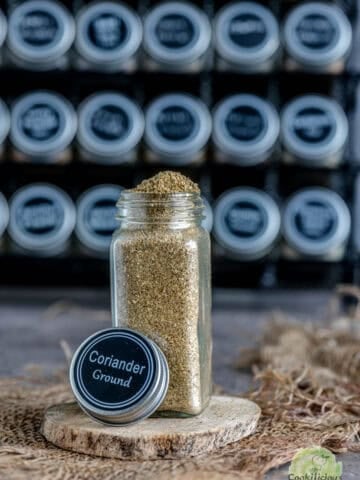

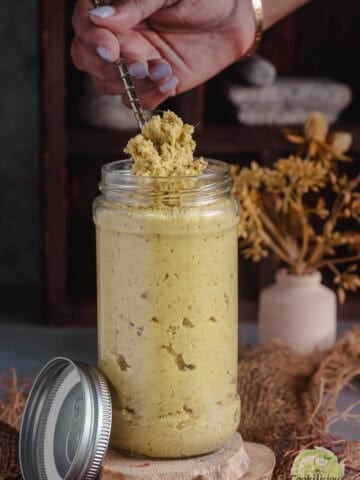
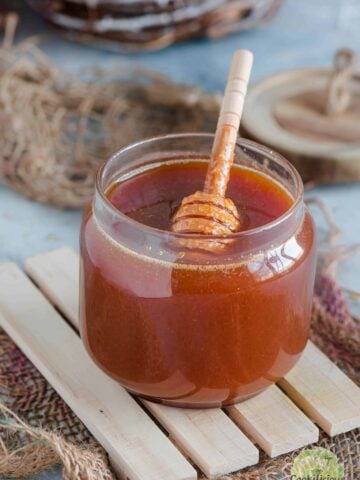
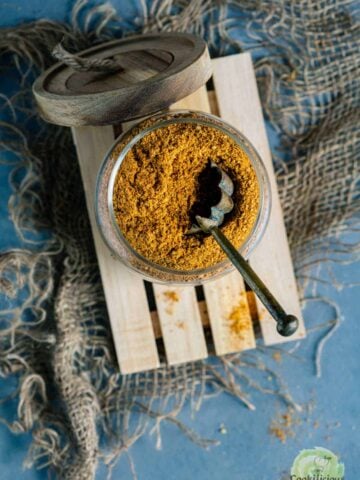


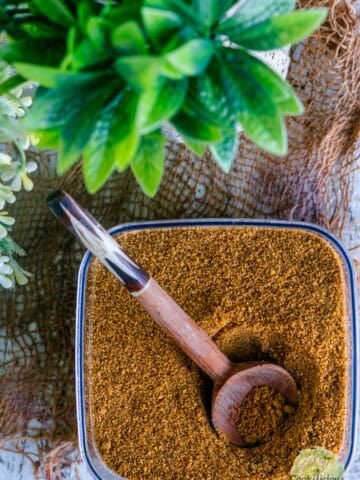
Leave a Reply